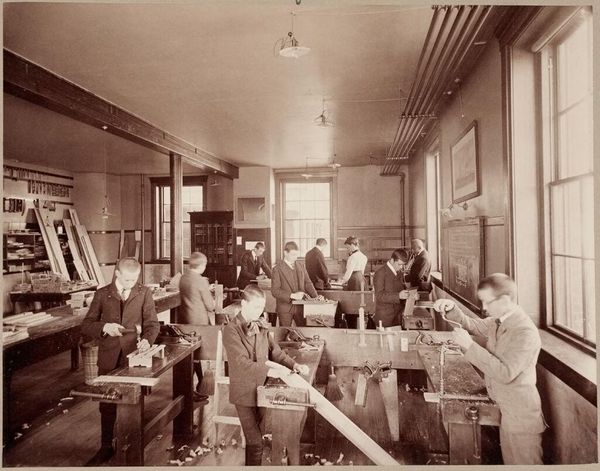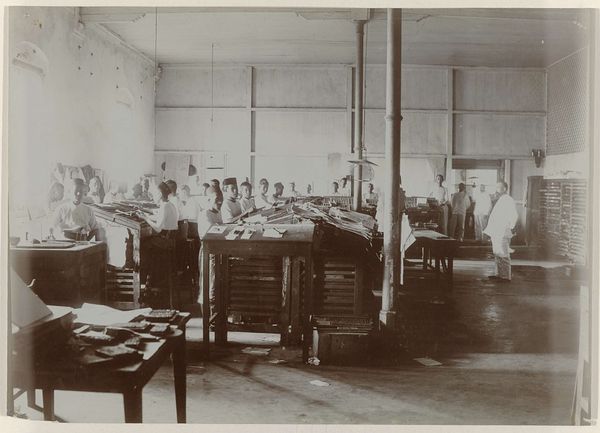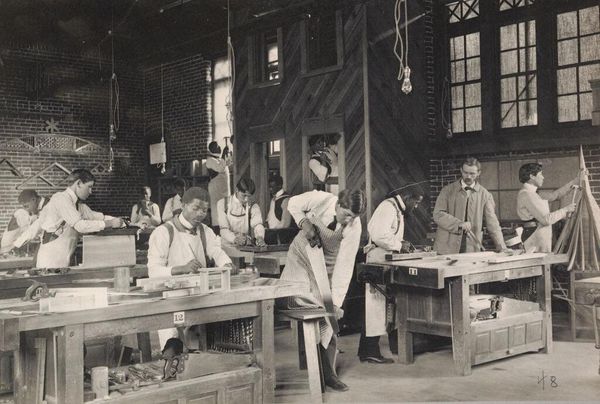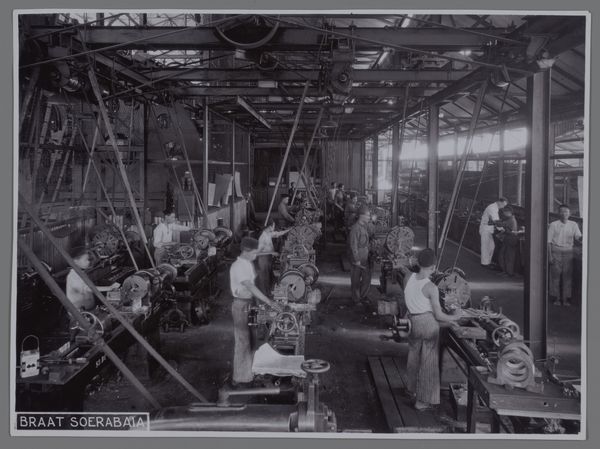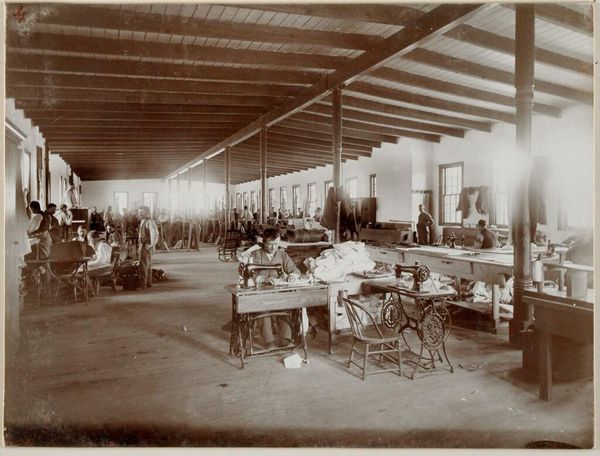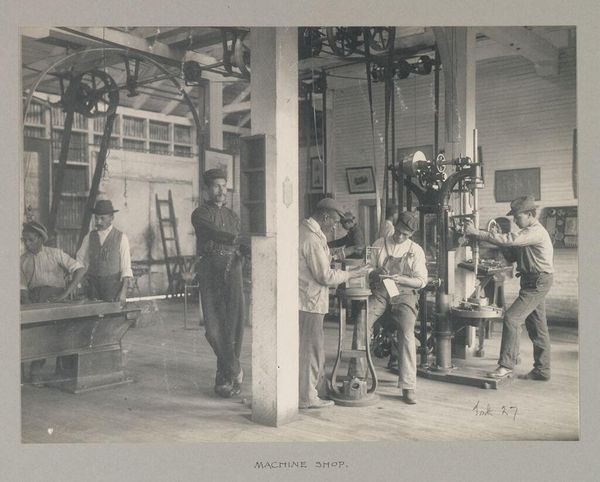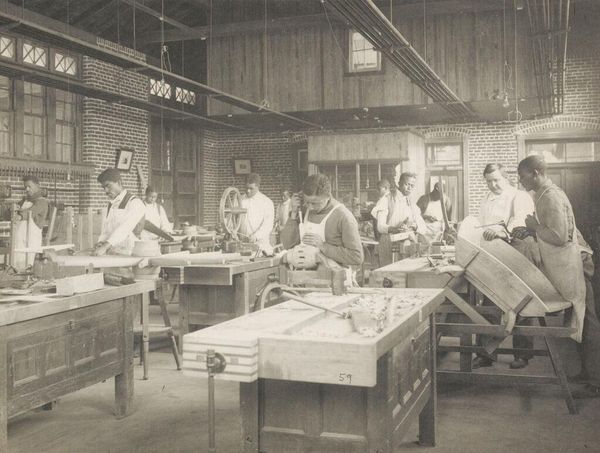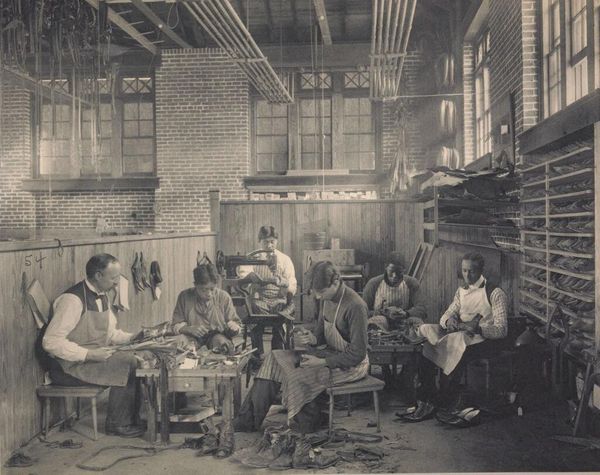
photography, gelatin-silver-print
#
portrait
#
photography
#
gelatin-silver-print
#
monochrome photography
#
genre-painting
#
realism
#
monochrome
Dimensions: height 200 mm, width 252 mm
Copyright: Rijks Museum: Open Domain
Editor: We're looking at "Werknemers rond een werkbank in een fabriek," a photograph, probably taken between 1900 and 1945, maybe by Frank Meadow Sutcliffe. It depicts workers in a factory. The light seems very diffused. I'm struck by the textures - wood, metal, and clothing - and the sheer repetition of bodies and labor. What do you see here? Curator: I see a careful composition meant to document, but also perhaps elevate, the process of industrial production. Look at how Sutcliffe uses the gelatin-silver print – a relatively new technology at the time – to render the details of labor. It highlights the materials being manipulated by these workers, making their presence as important as the labor itself. Editor: So, it's not just about documenting their work, but almost glorifying the process and their contribution? Curator: Precisely! Consider the social context: rapid industrialization. Photography was uniquely positioned to capture and circulate images of this new world of labor. Do you notice anything about their clothing, perhaps suggesting a separation from traditional crafts? Editor: Yes, many of the men are wearing very similar caps, perhaps denoting rank, station, and function rather than craft. They’re almost like components within the larger machinery of production. Curator: Indeed. And consider the machinery itself – its materiality, its presence dominating the room. The photograph challenges any romantic notion of craftsmanship, instead presenting labor as a system, made of individuals, materials and processes all working together in an age of increased consumerism. What do you think? Editor: I didn't consider the photograph a document challenging Romantic notions. So it reveals the means and materials of production itself, in terms of its cultural time and historical background. Fascinating. Thank you. Curator: My pleasure. This work truly shows that art is entrenched in the material processes of everyday life.
Comments
No comments
Be the first to comment and join the conversation on the ultimate creative platform.

